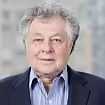Teva Pharm. USA, Inc. v. Sandoz, Inc., No. 13-854, 2015 U.S. LEXIS 628 (Sup. Ct. Jan. 20, 2015) (Breyer, J.) (Thomas, J., dissenting). Click Here for a copy of the opinion.
Teva sued Sandoz for infringing a patent that covers a method for manufacturing Copaxone, a drug for treating multiple sclerosis. Sandoz argued that the patent is invalid because the claim language, specifying "a molecular weight of 5 to 9 kilodaltons" for the active ingredient, was indefinite under 35 U. S. C. §112 ¶2. According to Sandoz, The patent did not state which of three different methods was used to calculate molecular weight. The district court credited Teva's expert, rejected the indefiniteness defense, and held that the patent is valid. It concluded that "molecular weight" referred to the most prevalent molecule in the composition (and was neither an average molecular weight nor a weighted average favoring heavier molecules). On appeal, the Federal Circuit reviewed the district court's claim construction de novoand reversed. Teva petitioned for certiorari, which was granted.
In the context of interpreting a patent claim, the Supreme Court considered "what standard the Court of Appeals should use when it reviews a trial judge's resolution of an underlying factual dispute." The Majority concluded that FRCP 52(a)(6) applies to any subsidiary factual findings by the lower court. This requires "appellate courts to review all such subsidiary factual findings under the 'clearly erroneous' standard."
More specifically: "When the district court reviews only evidence intrinsic to the patent, the judge's determination is solely a determination of law, and the court of appeals will review that construction de novo. However, where the district court needs to consult extrinsic evidence in order to understand, for example, the background science or the meaning of a term in the relevant art during the relevant time period, and where those subsidiary facts are in dispute, courts will need to make subsidiary factual findings about the extrinsic evidence. The district judge, after deciding the factual dispute, will then interpret the patent claim in light of the facts as he has found them. The ultimate construction of the claim is a legal conclusion that the appellate court can review de novo. But to overturn the judge's resolution of an underlying factual dispute, the appellate court must find that the judge, in respect to those factual findings, has made a clear error." The Court also instructed that "[a]n issue does not lose its factual character merely because its resolution is dispositive of the ultimate legal question."
The Supreme Court rejected Sandoz's argument that factual and legal questions are often difficult to separate, because "Courts of appeals have long found it possible to separate factual from legal matters." The Court also was not convinced that "'clear error review would bring about less uniformity" since "[a]fter all, the Federal Circuit will continue to review de novo the district court's ultimate interpretation of the patent claims." Contrary to the dissent, the Court found that claim interpretation is comparable to the construction of private written instruments such as contracts and deeds, and is not akin to the interpretation of a statute.
Here, the district court evaluated factual evidence, embodied in expert testimony, to determine how a skilled artisan would use certain chromatogram data, plotted on a curve, to reflect molecular weights. Based on that factual finding, the court made a legal conclusion that "molecular weight" was not indefinite claim language. When the Federal Circuit reviewed this decision de novo, it rejected the expert 's explanation "without finding that the District Court's contrary determination was 'clearly erroneous.' Thus, the Federal Circuit erred in failing to review this factual finding only for clear error."
For these reasons, the Supreme Court vacated the judgment and remanded the appeal.
In his dissent, Justice Thomas concluded that the "evidentiary underpinnings" of claim construction are a legal matter and not a factual question. He argued that "the nature of the legal instrument dictates [the Court's] treatment of subsidiary findings..." By analogy, a patent resembles a statute, not a private contract, because patents are governmental dispositions and are regulatory in nature. Since "the ultimate meaning of a patent claim, like the ultimate meaning of a statute, binds the public at large, it should not depend on the specific evidence presented in a particular infringement case." The meanings of technical terms in a statute involve only conclusions of law, and the same treatment for claim terms in a patent is warranted. According to Justice Thomas, the Court has been unwilling to interpret sovereign dispositions in the same way it interprets analogous private conveyances. Further, "the need for uniformity in claim construction" favors de novo review of subsidiary evidentiary determinations. The dissent also was concerned that fewer claim construction decisions would be precedential, "thereby injecting uncertainty into the world of invention and innovation."
The content of this article is intended to provide a general guide to the subject matter. Specialist advice should be sought about your specific circumstances.







